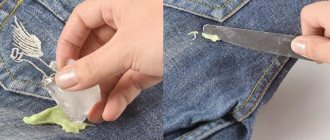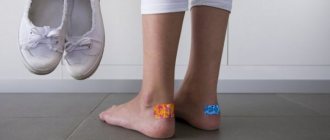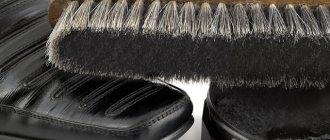Felt-tip pens have gradually become a part of our lives. Children love to draw with them, they are actively used in the office and in industry, in tailoring and in interior design. There is probably no home, business or office where there is not at least one felt-tip pen or marker. Accordingly, sometimes the question arises: what to do if the felt-tip pen has dried out? Is it possible to somehow restore its “working capacity” at least temporarily?
Varieties
Felt pens are made from water or alcohol. There are not only felt-tip pens for drawing on paper, but also on metal, concrete, leather, glass, rubber and other various surfaces. In addition, they are collapsible and non-dismountable. Also, on some felt-tip pens and markers, the manufacturer indicates that they are strictly prohibited from being disassembled or refilled. Let's take a closer look at all these nuances.
We prepare a special dressing from simple ingredients
There are two ways to prepare a special dressing. So, what to refill the marker with?
For the first option, you will need: water, gouache, ink, powder, PVA glue, two tablespoons of sugar and a half-liter container.
First you need to fill the vessel one third with water. Next, gouache and powder are added to the water. Beat thoroughly and slowly add mascara. To prevent the dressing from turning out too black, it is important not to overdo it. After this, you need to add 20 drops of glue to the mixture and mix the mass thoroughly again. Sugar is added to achieve homogeneity. The mixture is whipped again - the dressing is ready!
For the second method you will need: two containers, a ballpoint and gel pen, a touch-corrector, nail polish, acetone, hairspray, brilliant green.
First you need to pour the bar corrector into one container and then let it dry. Grind the dried mass into powder and pour into another container. Ink from a ballpoint pen and ink of the desired color from a gel pen are also added there.
Add brilliant green and nail polish of a suitable color to the resulting mass. All this is fixed with hairspray and mixed thoroughly. Next you need to add nail polish remover or acetone. That's all. The gas station is ready!
The important thing is that these refills are moisture resistant.
Water markers
Almost all modern children's markers are water-based. This is done to provide bright, rich colors while still being safe for the youngest artists. In addition, such markers are easily washed off from clothes and any surfaces, do not have an unpleasant odor and can be stored for quite a long time even with open caps. A drawing made with such a felt-tip pen lasts a long time and does not fade in the sun. But, as you know, nothing lasts forever. Sooner or later, even such markers cease to please their owner.
Trim off the dried end
A fairly simple method, but only suitable if you know how to handle scissors carefully.
You will need nail scissors. Slowly and carefully cut off the dried tip, carefully following the shape of the applicator. It must not be violated under any circumstances. Make the applicator thin and sharp so that it is still comfortable to draw lines with, and maybe even more comfortable than before.
To understand which part has dried, hold the felt-tip pen up to the light. Those places where there is no shine are dry, since liquid does not fall on them.
The cut applicator must be pulled out and dipped into makeup remover: it will clean the so-called “pores”, rinsing them of particles of cosmetics that got there from the face while applying eyeliner.
What if the marker is dry?
What to do. First, understand the composition of the writing medium. For example, I stopped writing with a water-based felt-tip pen.
Most often this happens because the water that allows the dye to drain has run out or dried out. In this case, there are several ways to restore the felt-tip pen and give it a second life:
- If the design of the felt-tip pen is such that it can be easily disassembled, then it is necessary to completely remove the rod and place it in a bowl of warm or even hot water. This is necessary so that the rod is completely saturated and the remaining dye is evenly distributed inside.
- If a non-separable felt-tip pen has dried up, you can try to revive it by dipping only the tip into hot water and leaving it there for a while. In addition, you can simultaneously try to introduce water into the rod and on the other side of the felt-tip pen. This can be done using a syringe. When pouring water into the syringe, do not overdo it, as you can completely wash the dye out of the felt-tip pen.
- Another interesting and effective way to restore a water-based marker is to wet the tip with vinegar. To do this, you can apply a few drops using a pipette or the same syringe.
Unfortunately, all of the above methods will not help if the dye runs out in the rod. By the way, with intensive refueling or a large amount of water poured, you may accidentally wash it yourself.
Causes of blockage
The main causes of drainage problems are as follows:
- Mechanical blockage is a consequence of various objects entering the sewer system, such as rags, small stones, coins, etc.
Important! If you have a pet that you wash regularly in the bathtub, then you should be prepared for hair to accumulate in the pipe or trap. Sooner or later this will lead to a blockage.
- Operational blockages of pipes are a consequence of improper operation, and can also appear in the absence of preventive measures.
- Man-made blockages are a consequence of improper pipe installation. If mistakes were made during the construction stage, for example, an incorrect angle of inclination of the pipes, then contaminants will accumulate in them, which will cause the pipes to clog.
Important! You can only remove mechanical blockages yourself.
If it contains alcohol
Alcohol markers are rarely used by children, as they have a strong, unpleasant odor and can be hazardous to their health. In addition, they dry out quickly enough and are much more expensive than water-based ones. Alcohol-based felt-tip pens and markers are used in offices, industry or creativity. As a rule, the inscription made with such a felt-tip pen can be removed using an alcohol-containing solution.
How can you refill markers for Sketching?
Drip method for refilling markers
This is the most common way to refill
most brands of drawing
markers Use the thin spout of the ink bottle to extract drops. It is most convenient to start filling
using the drip method from the side of the wide tip.
Interesting materials:
How do companies pay dividends? How to convert currency to Kaspi Gold? How to feed an overweight dog? How does a cat talk? How does a cat react to the appearance of a kitten? How to respond beautifully to a birthday greeting? How to be treated for acute respiratory infections? How is steel alloyed? How to sober up easily and quickly? How did Lenin make a revolution?
What to do?
- First way. Pour alcohol into a marker cap or another small container and place the marker there. Leave it there for a while until it collects the required amount of liquid.
- Second way. Carefully drill or pierce a hole with a hot nail, through which pour a few drops of alcohol with a syringe. Then solder it or install a removable plug.
Attention! When using this method, do not use hot objects, as highly flammable alcohol vapors may collect under the lid. Simply heat a nail or any other sharp object slightly.
How to make an alcohol marker?
You take alcohol and an old marker or felt-tip pen (This is the most banal way). You pour alcohol into a glass. The more, the paler the color will be. Then you pull out the writing “nose” from the marker and throw it there. ... How to start drawing if you are already an adult?
- topics
- flowers
- materials
- the techniques used.
27 Feb
2022 Interesting materials:
What foods cleanse the gallbladder? What food products can be transferred to a pre-trial detention center? What foods lower blood pressure? What professions belong to the economic sphere? What works are included in the Cthulhu mythos? Which tablet manufacturers are good? What gaskets are best? What fog lights should I put on a viburnum? What birds live in the Wrangel Island Nature Reserve? What birds remain to spend the winter in Ukraine?
Methods for refilling a felt-tip pen
To be completely honest, all of the above methods do not refill, but rather dissolve the dye already present in the felt-tip pen, that is, they actually help if the felt-tip pen has dried out. What to do when the dye runs out?
You can try adding printer ink to the refill or use various household dyes, such as brilliant green, manganese, etc. But remember that felt-tip pens filled in this way will not last you long. And their price is quite low and does not justify such efforts. All these methods are more suitable when it is not possible to purchase a new felt-tip pen at this very moment.
Additionally, some alcohol markers are not designed to be refilled. If you try to bring them back to life, you will simply fail. This information is usually indicated on the packaging. Most often these are expensive art markers or, on the contrary, cheap Chinese ones, in which all the dye instantly flows out.
The number of “refills” in any case will depend on how much dye was originally in the felt-tip pen. If the manufacturer immediately saved money, then such a felt-tip pen will not serve you for long, no matter how hard you try.
There can never be too many markers for children. They draw with them all day long and turn to their parents for help when they stop writing. What to do when you don’t have time to buy new markers, but your child asks to draw? Try to restore them! How, you ask? This article will help you understand this issue and return your baby’s smile.
Children's markers in most cases are water-based. They are much safer than other colored markers. But they are also found based on alcohol. Let's look at ways to restore these two components.
How to wipe off a marker: 24 effective ways for different types of surfaces
How to wash plastic How to erase permanent marker from skin How to remove a stain from clothing How to remove permanent marker from furniture How to remove marks from linoleum and wallpaper
Markers are used in drawing lessons, in the office, and in everyday life at home. It often happens that they stain clothes, furniture, walls and other household items.
If you find a stain, the first thing you need to do is calm down and assess the situation. Felt-tip pens and different types of stationery markers can be washed off with soap or laundry detergent, but permanent markers require a special approach. They contain chemical elements that provide very durable coloring on almost any material, which is why they are often used in production.
Each individual case will have its own method, depending on the material that needs to be washed and what products you have in your arsenal.
How to wash markers from plastic (5 ways)
Magnetic boards for entertainment or study usually come with special markers. They wash off well, do not dry out for a long time and are easy to use. But sometimes, out of stupidity or having no other choice, a permanent felt-tip pen can be used for such a board. Difficulty arises because the special sponge for the board does not erase it.
There are several ways out of this unpleasant situation. You just need to remember the safety rules and do not work with harmful substances with your bare hands, and also do not scrape or put pressure on the board - this can lead to its deformation.
Here's what might help:
- regular office eraser. It is better if it is large or medium in size. It can sometimes cope quite successfully with dirt on a smooth surface;
- cloth or sponge with alcohol (or vodka);
- hydrogen peroxide;
- melamine sponge;
- acetone. It can ruin some cheap plastics, so this option requires testing in an inconspicuous area of the board to avoid damaging the entire item.
How to erase permanent marker from skin (3 ways)
Children are extremely unpredictable. No one knows when they will get the idea to play not with children’s washable markers, but with dad’s marker for work. It is better not to keep such things within the reach of a child, because it can be dangerous. Especially if he decides to taste it.
However, there are situations when a child painted himself or you accidentally smeared it on your hand. In such cases, you need products that will not harm the skin, but at the same time will do an excellent job of removing dirt.
- Take a tablespoon of salt and mix it with water until it becomes a thick mixture. Now apply it to your skin and rub lightly. This method will exfoliate the top layer of skin, but it will not completely solve the problem the first time.
- Butter or olive oil works well. You need to carefully wipe the area with it, but you shouldn’t count on a perfect result.
- The easiest and even most enjoyable way is to take a bath. Give your baby a real foam paradise. After water procedures, not a trace will remain of stains.
How to remove marker from clothes (3 ways)
There are many special products for each type of fabric. Having bought what you need, you will be sure that the clothes will not deteriorate after processing.
However, there are options and try to cope with the problem yourself at home.
- Toothpaste. It must be applied to the area of contamination, and then carefully wiped off with a dry and clean cloth. After that, wash the item in the usual way.
- Washing with salt. Throw the item into the drum of the washing machine, and instead of powder, add a glass of salt. Set the temperature to cold. After this, not a trace remains of many stains.
- For white clothes, you can use a stain remover or bleach to remove the black marker mark without the risk of ruining the color of the item.
If all else fails, you can always go to a dry cleaner, where they will definitely help you with your problem.
How to remove permanent marker from furniture
Carefully examine the piece of furniture before you start using any chemicals on it. This could damage it irrevocably.
Wooden furniture (4 ways)
- To clean wooden surfaces, you can take baking soda mixed with toothpaste in equal proportions. Apply the mixture to the surface and leave for several hours, then remove the residue with a dry cloth.
- Acetone can only be used on wood that is not coated with paint.
Try applying it with a cloth and then wash it off with soap. - For coatings without varnish, a stationery eraser is suitable. It can remove some of the dirt, and alcohol can handle the rest.
- Alcohol-containing products or an alcohol solution are also used against such stains, but carefully, because too strong drinks and solutions (more than 45 degrees) can damage the surface.
Leather furniture (2 ways)
Products made from genuine leather are expensive, so you need to act carefully.
- The ideal option is a rich cream. Apply it to the surface and rub the material vigorously. You will have to repeat the procedure several times until the stain completely disappears.
- Or you can take a quicker route and scrub the stain with alcohol, then wipe the area dry and apply a rich cream to prevent the skin from drying out.
Furniture upholstered with fabric (2 ways)
- Rub the area with a rag soaked in hydrogen peroxide. This method will not harm synthetic or natural cotton fabric. After the cleaning procedure, wash the furniture with a cleaning product.
- You can use alcohol and grated laundry soap.
You need to mix the ingredients until a homogeneous paste, apply to the stain, leave for half an hour, and then rinse the area until the stain completely disappears.
Metal products (1 method)
Metal can be easily cleaned with alcohol, perfume, and cologne. Just soak a cloth in the substance and gently wipe the item.
How to remove marker from linoleum and wallpaper (4 methods)
It will be difficult to deal with a stain on linoleum due to the persistent paint in the marker, but alcohol-based products or various detergents can help you with this. You will have to make an effort and mechanically wipe off the dirt.
Depending on the type of wallpaper, you can try to use several options.
Vinyl wallpapers
This type is easier than others to remove dirt. In this case, you can use soap or products based on it, alcohol wipes, or you can apply toothpaste to the stains, leave for a few minutes and rinse. The last method can be repeated several times until complete cleansing.
Non-woven base
It's more difficult here. Alcohol can help, but it will take a lot of time and effort. You will have to rub the area until the stain gives way. In addition, a special stain remover for clothes, which can be purchased at a household chemical store, is suitable.
Paper wallpaper
Unfortunately, they are not very durable. You can try to save the walls using sunflower oil, which you will then need to wash off with soap and leave to dry. But in most cases, paper deteriorates from any chemical exposure.
Source: https://lisa.ru/moy-uyutnyy-dom/614092-chem-otteret-marker-24-dejstvennyh-sposoba-dlya-raznyh-tipov-poverhnostej/
Production technology
Let's try to figure out how markers are made. Manufacturing involves making all the components and assembling them into a single whole, but first things first.
The basis for the production of felt-tip pens is plastic housings. They and the caps are made in the following way: a scattering of white plastic granules and dye are mixed and poured into a cauldron, in which they turn into a hot viscous mixture. It is poured into a mold and plastic tubes are made by pressing, which will serve as the body. You can read more about how plastics are made and the method of pressing them.
The ink reservoir is a bundle of hundreds of thousands of very fine nylon fibers, which are twisted very tightly on a special machine. After which they are wrapped in cellophane wrapper, resulting in a long sausage, which is cut into containers to the size of a felt-tip pen.
For felt-tip pen ink, concentrated dye is diluted in water with a hygroscopic substance that prevents drying.
The rod, as a rule, is made of nylon or felt, because only these materials are able, on the one hand, to prevent the felt-tip pen ink from leaking out, and, on the other hand, to allow a sufficient amount of it to pass through.
All you need is a dry marker and some alcohol
The reason you need rubbing alcohol is because permanent inks contain organic solvents. The solvent has a high rate of evaporation, so you constantly smell it in the office, school, and even in your shirt pocket. This same fact is the reason why solvent-based markers dry faster than water-based markers.
Choose rubbing alcohol that is 91%, 95% or 99%. Alcohol that is 75% concentration or lower will not work very well because it contains too much water. It doesn't matter whether the rubbing alcohol is based on isopropyl alcohol, ethanol, or a mixture of the two. If you don't have alcohol, you can use acetone or xylene, but both chemicals stink and breathing their fumes is unhealthy.
Method 1: Temporary disaster recovery
If you need a quick and easy permanent pen restoration to finish a project or complete your painting, all you need to do is wet the tip of the pen with alcohol. An easy way to do this is to pour some alcohol into a small container and soak the tip of the pen in the liquid. Wipe the tip of the marker before writing with it, otherwise the ink may be runny or faded.
Method 2: Recovery for a very long time
If you have more time for all procedures, then there is an easy way to recover, if not forever, then for a very long time. It will definitely be as good as new. To do this, you need to remove the ink pad from the pen and soak it in alcohol.
- Hold the handle by one end and pull the other towards you. You can use a pair of pliers to make the grip more stable. Once you open it, you will see a long section containing the ink box with the pen and a shorter back section containing the ink.
- Set the back of the marker aside for now; you will need it a little later.
- Hold the longer part vertically as if you were about to write. Place a drop of alcohol (or other organic solvent) on the top of the ink pad. This is the same part as the pen, but on the opposite side from the writing part. Continue adding liquid until the ink pad is saturated.
- Reassemble the marker and cap the pen. Give the solvent a few minutes to reach the tip of the pen before using the marker. You can shake it if you want, but it won't change anything.
The marker will be as good as new. Just remember to put the cap on when not in use so you don't have to fix it again!
Is it possible to draw on clothes with a permanent marker?
If you don’t know whether you can draw with this particular permanent marker on fabric, first read the manufacturer’s instructions.
Because a permanent marker, intended, for example, for drawing on paper, is not suitable for applying designs to fabric. The composition of its ink is not fast enough to withstand washing even in cool water.
Therefore, you can only mark clothes with a permanent marker if you do not plan to wash them. In other cases, we recommend using special permanent fabric markers.
To prevent the permanent marker from bleeding through the fabric, place a piece of cardboard underneath it while you work.
Method one - removing permanent ink from hard surfaces
- The most effective and efficient method of removal is alcohol and alcohol-containing products. The main thing is that the alcohol concentration is above 45%. You can use vodka or other alcoholic drinks, but it is best to use alcohol. Dampen a napkin with it and start rubbing the stain.
- The next method contains ingredients such as baking soda and toothpaste. We take both and mix in a ratio of 1 to 1. You can mix immediately on the stain. Then let the paste brew and take a napkin. Using the applied effort and circular movements, we begin to wipe off the ink. You will have to spend some time, but the method is definitely effective.
- Wonder sponge - or magic sponge. These items are sold in hardware stores and on TV. They say it helps, but we haven't tried it. They say you just need to moisten it a little and start rubbing. If you try it, please tell me.
- Another very effective method is wd-40. They can clean anything. Simply apply to the stain and scrub thoroughly.
- We have not tested this method either. We only saw on TV that they were advertising a miracle marker for removing stains. According to advertising, everything is simple. You move it along the ink track, like in the children's game “connect the dots,” and the ink disappears.
- It will not be possible to remove the stain completely, but it will be possible to hide it. Just take a hard pencil eraser and rub, rub, rub...
- And now the recipe for removing permanent marker from the people is sunscreen. They say that if you apply it to a stain, wait a little, “cast a magic spell” and start rubbing with a rag, the stain will disappear. Doubtful, to be honest.
- Good old acetone. Our editors' choice, along with alcohol. The only negative is the smell, but it goes away quickly.
Markers for clothing
Fabric markers are highly valued by handmade fans. In the process of author's drawing, patchwork, creating logos and embroidery, you cannot do without such an assistant; this is an excellent tool for creating graphic and other images on synthetic and natural textile materials. Thanks to markers, many seemingly hopelessly damaged things can find a second life.
Even a novice art lover can easily master the art of painting on fabric. It will take very little time to figure out which markers can be used to draw on clothes, and a minimum of effort to turn ordinary T-shirts, jeans, sneakers, bandanas, caps into a unique masterpiece of your own production. By painting a bag, pillow or tablecloth, you will pleasantly surprise and delight your friends, relatives or acquaintances with an exclusive gift.











